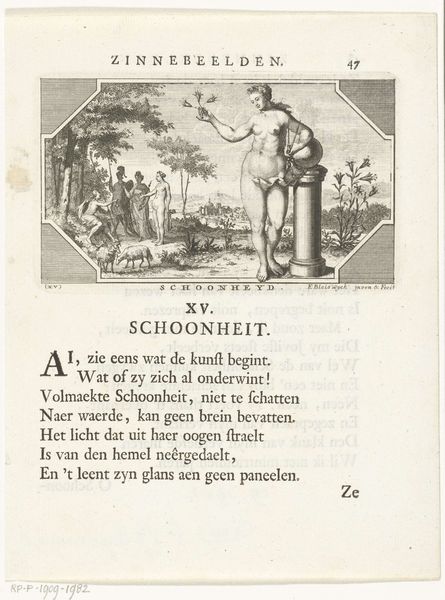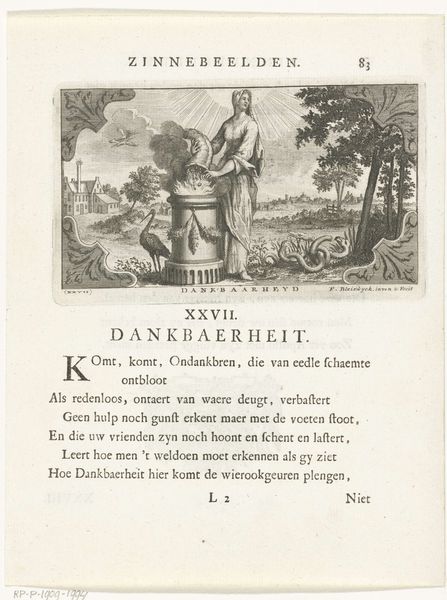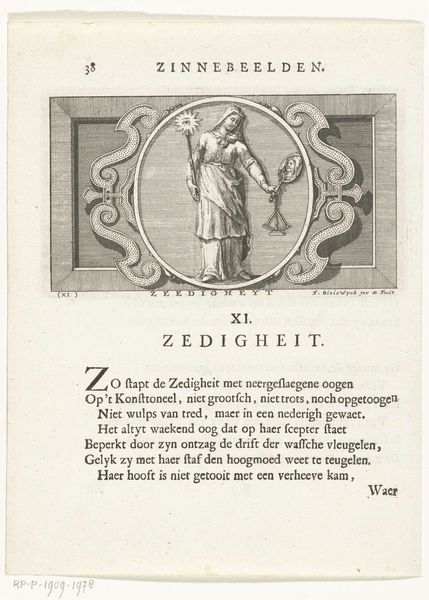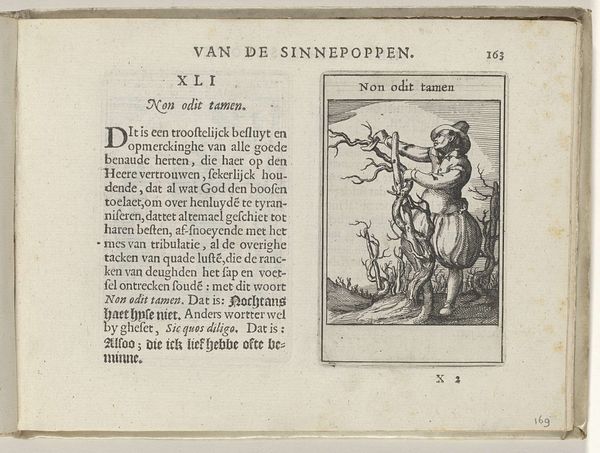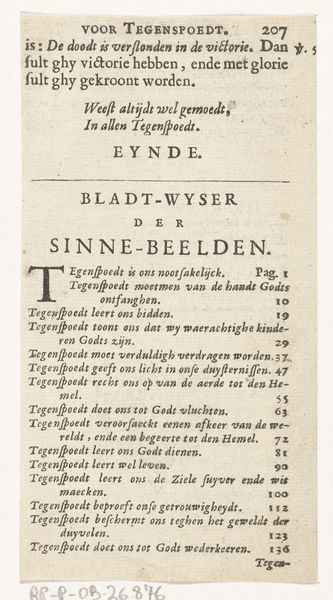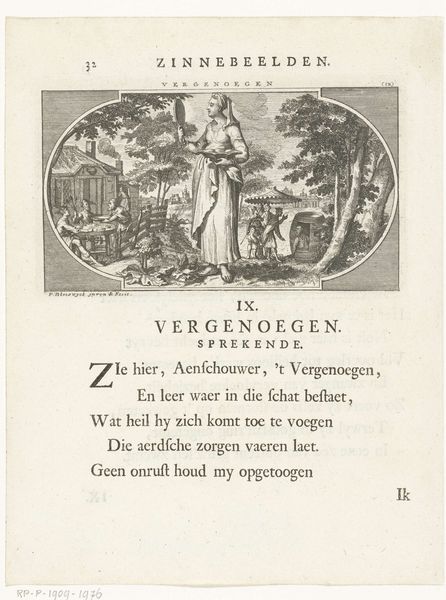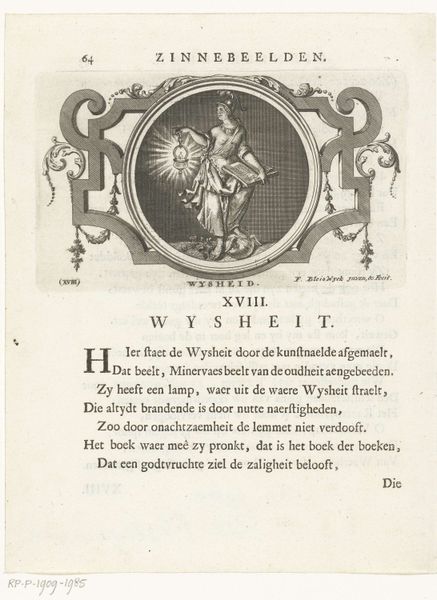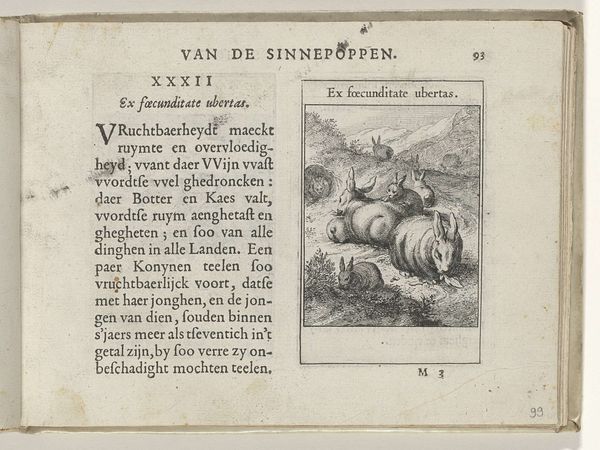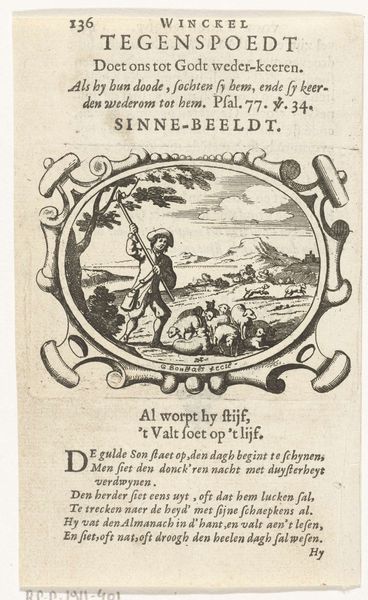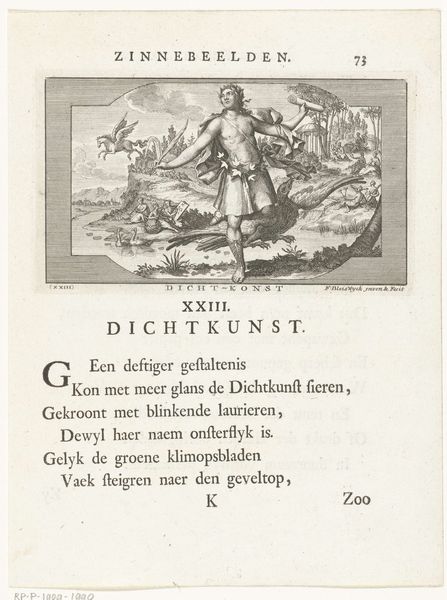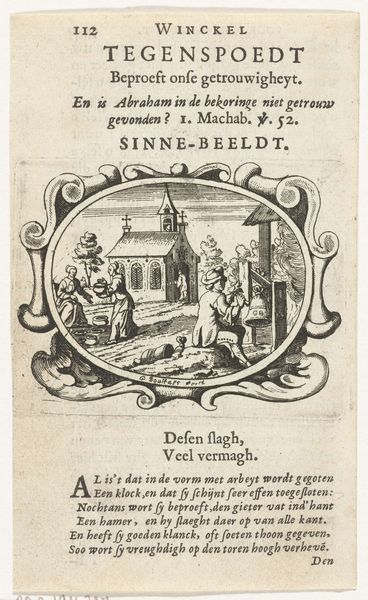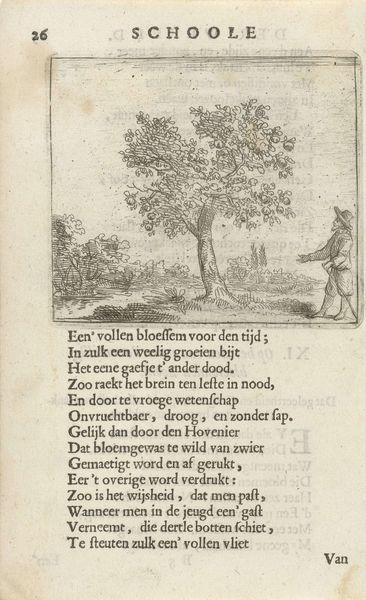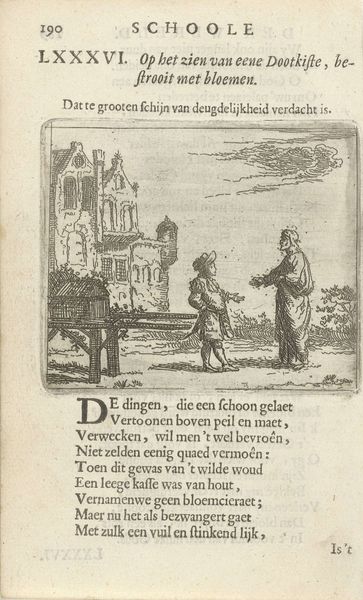
Dimensions: height 196 mm, width 150 mm, height 127 mm, width 78 mm
Copyright: Rijks Museum: Open Domain
This emblem, with its allegory on vanity, was made by François van Bleyswijck, likely in the early 18th century. It's an etching, a printmaking technique that democratized image production in its day. The process begins with a metal plate, coated with wax. The artist scratches an image into the wax, exposing the metal beneath. The plate is then submerged in acid, which bites into the exposed lines, creating grooves. Ink is applied to the plate, filling these grooves, and then the surface is wiped clean. Finally, paper is pressed against the plate, transferring the ink and creating the print. Consider the labor involved – the skilled hand needed to incise the design, the knowledge of chemistry to control the etching process, and the physical effort of printing. Etchings like this one were relatively inexpensive, yet they carried cultural weight. They were a form of visual communication accessible to a wider audience, reflecting and shaping societal values. So, while it may seem like a simple print, it is the result of complex social dynamics.
Comments
No comments
Be the first to comment and join the conversation on the ultimate creative platform.
